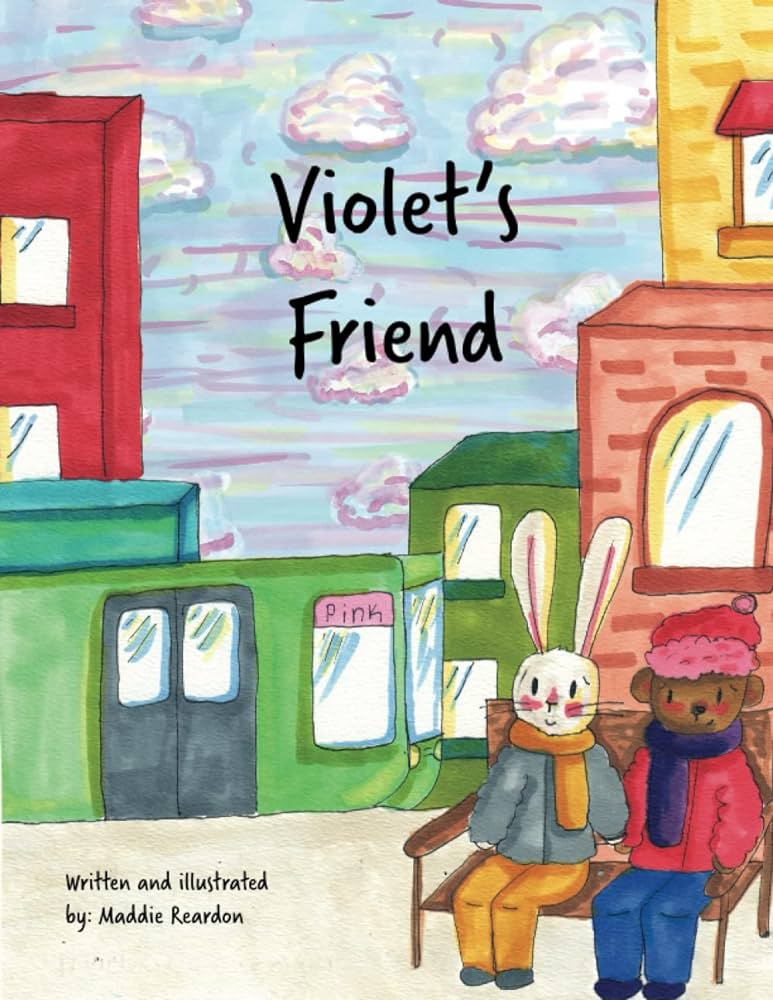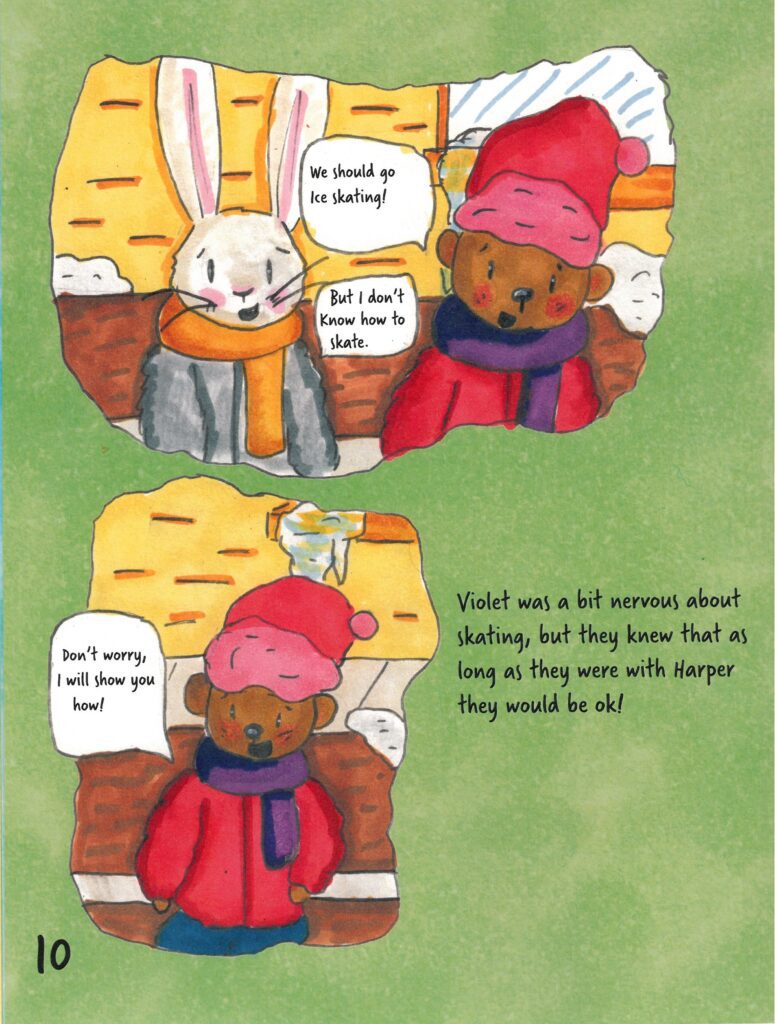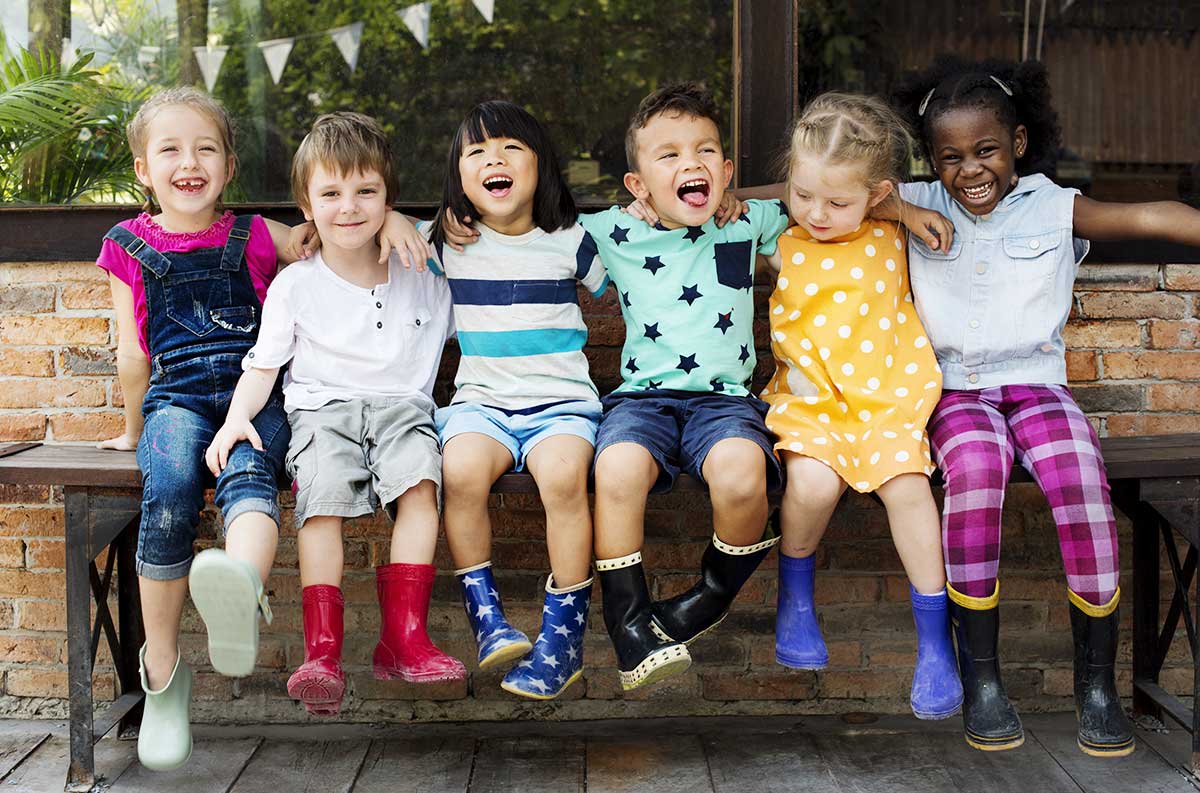
Inclusive Children's Book Teaching Guide
Violet's Friend
What is this book about?
Violet and Harper are best friends. Today they are going to the ice rink, but Violet doesn’t know how to skate.
Violet and Harper support each other and achieve more than they can alone as they spend the day together—eating breakfast, taking the train, and visiting the ice rink. Violet's character uses they/them pronouns and Mark helps Violet find an all-gender bathroom.
The author, Maddie Reardon, lives in Berwyn, Illinois, with their moms, cousin, dog, and two cats. Maddie wrote and illustrated this book to represent people like them. The book was published in 2023 when Maddie was in eighth grade.
Who is depicted in this book?
- Characters who may be LGBTQ+ (specifically trans)
- Animal characters who transcend gender stereotypes
What early childhood themes and concepts does this book explore?
- Friends help us feel safe when we are afraid or when we are trying new things
- How friends show love and care (greeting with a hug, encouraging and helping when a friend feels scared, making sure Violet is okay after a fall at the skating rink)
- Exploring a city (looking in shop windows, sharing a meal, taking the train, visiting a busy skating rink)
- Choosing the bathroom that is right for you
How does this book support anti-bias education?
Violet’s Friend depicts a friendship that includes a gender-diverse character and shows how others can show sensitivity and care when supporting gender-diverse peers.
Depending on how the book is shared or used—and the developmental level of the children—Violet's Friend may be used to support the following core goal from Anti-Bias Education for Young Children and Ourselves:
Diversity—Teachers will promote each child’s comfortable, empathetic interactions with people from diverse backgrounds so that children will express comfort and joy with human diversity, use accurate language for human differences, and form deep, caring connections across all dimensions of human diversity.
How can this book be used to meet early childhood learning standards?
For all ages
Use Violet's Friend to meet early childhood literacy standards
For children from birth to age three
Teaching suggestion: Point out the actions and various familiar settings that the youngest children can react to, point at, or name.
What Illinois Early Learning Guideline does this meet for children from birth to age three?
Developmental DomainSocial-Emotional Development
Standard: Relationship with PeersChildren demonstrate the desire and develop the ability to engage and interact with other children.
Indicators for children:
- Begins to engage in parallel play, in closer proximity to other children but no interaction is attempted (7–18 months)
- Begins to engage in simple reciprocal interactions, such as rolling a ball back and forth (16–24 months)
- Demonstrates a preference for select peers (21–36 months)
For preschoolers (ages three to five)
Teaching suggestion: Violet and Harper engage in a series of activities throughout their day. Ask the children to recall and describe these activities using the book's final page, which lists objects central to the story.
What Illinois Early Learning and Development Standards does this meet for preschoolers?
Language Arts Standard2BRecognize key ideas and details in stories.
Benchmark 2.B.ECb:
With teacher assistance, retell familiar stories with three or more key events.
Teaching suggestion: Encourage the children to identify the feelings experienced by Violet in the story.
What Illinois Early Learning and Development Standards does this meet for preschoolers?
Social/Emotional Development Standard30AIdentify and manage one’s emotions and behavior.
Benchmark 30.A.ECa:
Recognize and label basic emotions.
Teaching suggestion: As you share Violet’s Friend, encourage the children to listen for the traits of a good friend and share their own examples of a good friend.
What Illinois Early Learning and Development Standards does this meet for preschoolers?
Social/Emotional Development Standard31ADevelop positive relationships with peers and adults.
Benchmark 31.A.ECa:
Show empathy, sympathy, and caring for others.
Benchmark 31.A.ECe:
Develop positive relationships with peers.
Teaching suggestion: Use Violet’s Friend as an opportunity to talk about and affirm supportive and protective friendships.
What Illinois Early Learning and Development Standards does this meet for preschoolers?
Social/Emotional Development Standard31ADevelop positive relationships with peers and adults.
Benchmark 31.A.ECa:
Show empathy, sympathy, and caring for others.
Benchmark 31.A.ECe:
Develop positive relationships with peers.
See inside this book.


